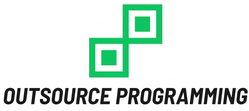Risk management in software outsourcing is crucial for ensuring the success of projects and minimizing potential challenges. Conduct a thorough risk assessment at the beginning of the outsourcing relationship. Identify potential risks related to project complexity, technology, communication, cultural differences, legal issues, and resource dependencies. Evaluate both internal and external factors that may impact the project.
Establish clear communication channels and expectations from the outset. Ensure that all stakeholders, including the outsourcing partner and the in-house team, have a shared understanding of project goals, timelines, and deliverables. Foster open communication to address concerns promptly.
By adopting these practical approaches to risk management, organizations can navigate the complexities of software outsourcing more effectively, ensuring successful collaboration with outsourcing partners and delivering high-quality software products.
The Importance of Practical Approaches to Risk Management in Software Outsourcing
Practical approaches to risk management in software outsourcing are crucial for several reasons, highlighting the importance of implementing these strategies effectively:
- Project Success and Timely Delivery: Effective risk management ensures that potential challenges are identified and addressed proactively. By anticipating and mitigating risks, teams can maintain project timelines and deliver high-quality software solutions on schedule, contributing to project success.
- Cost Containment: Identifying and mitigating risks early in the software outsourcing process helps in preventing costly issues from escalating. Practical risk management strategies contribute to cost containment by minimizing the impact of potential disruptions on project budgets.
- Client Satisfaction: Clients expect software outsourcing projects to be completed on time, within budget, and with the expected level of quality. Practical risk management ensures that client expectations are met, fostering satisfaction and building trust between the client and the outsourcing team.
- Effective Resource Utilization: By addressing risks systematically, software outsourcing teams can optimize resource utilization. Efficient risk management helps in identifying potential bottlenecks, allocating resources strategically, and avoiding unnecessary delays or resource wastage.
- Crisis Prevention: Practical risk management acts as a preventative measure against potential crises. Timely identification and mitigation of risks prevent minor issues from escalating into major challenges that could jeopardize the entire project.
- Adaptability to Change: In the dynamic environment of software development, changes are inevitable. Practical risk management equips teams with the ability to adapt to changing circumstances, whether it be alterations in project scope, technology updates, or shifts in business priorities.
- Long-Term Vendor Relationships: Establishing and maintaining long-term relationships with outsourcing vendors is essential for ongoing collaboration. Effective risk management contributes to the success of current projects, enhancing the likelihood of continued partnerships and fostering positive relationships.
- Quality Assurance: Comprehensive risk management practices contribute to the overall quality assurance of software development projects. By addressing potential risks related to technology, requirements, or team dynamics, teams can ensure the delivery of a high-quality product that meets client expectations.
- Mitigation of Legal and Compliance Risks: Legal and compliance risks are prevalent in software outsourcing. Practical risk management includes ensuring clear contractual agreements, compliance with regulatory requirements, and adherence to intellectual property laws. This mitigates legal risks and protects the interests of all parties involved.
- Enhanced Collaboration and Communication: Practical risk management fosters open communication and collaboration between the outsourcing team and the client. Transparent reporting of risks and proactive problem-solving contribute to a positive working relationship, improving overall project dynamics.
- Prevention of Reputation Damage: Failed software outsourcing projects can damage the reputation of both the outsourcing provider and the client. Practical risk management helps in preventing project failures, ensuring that all parties involved maintain a positive reputation within their respective industries.
- Strategic Decision-Making: Risk management provides valuable insights that enable strategic decision-making. By identifying potential risks and their implications, teams can make informed decisions, allocate resources wisely, and navigate the project with a strategic mindset.
The importance of practical approaches to risk management in software outsourcing lies in their ability to contribute to project success, client satisfaction, and the long-term viability of outsourcing relationships. By systematically identifying, assessing, and mitigating risks, software outsourcing teams can navigate challenges effectively, deliver quality solutions, and build strong partnerships with clients and vendors alike.
Best Practices for Practical Approaches to Risk Management in Software Outsourcing
Implementing best practices for practical approaches to risk management in software outsourcing is essential to ensure the success of projects. Here are key best practices to enhance risk management in the outsourcing process:
- Comprehensive Risk Identification: Conduct a thorough risk identification process at the beginning of the project. Involve key stakeholders, including the client and outsourcing team, to identify potential risks related to project complexity, technology, communication, and external dependencies.
- Prioritization of Risks: Prioritize identified risks based on their potential impact and probability. Focus on addressing high-priority risks first to allocate resources efficiently and mitigate the most critical challenges early in the project lifecycle.
- Regular Risk Assessment Reviews: Schedule regular reviews of the risk assessment throughout the project. As the project evolves, new risks may emerge or the significance of existing risks may change. Regular reviews ensure that the risk management strategy remains relevant and effective.
- Effective Communication Channels: Establish clear and effective communication channels among all stakeholders. Encourage open communication about potential risks, concerns, and challenges. A transparent communication culture helps in addressing issues promptly and collaboratively.
- Detailed Risk Mitigation Plans: Develop detailed risk mitigation plans for identified risks. Each plan should outline specific actions, responsibilities, and timelines for addressing potential issues. Well-defined mitigation plans provide a roadmap for the team to respond effectively when risks materialize.
- Contingency and Backup Plans: Create contingency plans for critical project components. Identify alternative solutions, resources, or approaches in case of unexpected events. Having backup plans in place allows the team to respond quickly and minimize the impact of unforeseen risks.
- Regular Performance Monitoring: Implement regular performance monitoring of both the outsourcing partner and the project as a whole. Track key performance indicators, milestones, and deliverables to identify any deviations from the plan. Early identification allows for timely corrective actions.
- Legal Clarity and Compliance: Ensure legal clarity in contracts and agreements. Clearly define roles, responsibilities, and dispute resolution mechanisms. Ensure compliance with relevant regulations and standards. Legal clarity contributes to risk mitigation by providing a framework for addressing contractual and legal issues.
- Cross-Cultural Training: Provide cross-cultural training for team members involved in software outsourcing. Understanding cultural differences helps in effective communication and collaboration. It mitigates risks related to misinterpretation, misunderstandings, and cultural clashes.
- Regular Team Building Activities: Foster team building between the in-house and outsourcing teams. Conduct regular team-building activities, both virtual and in-person if possible. Strong team dynamics contribute to better communication and collaboration, reducing the risk of misalignment.
- Iterative Development and Agile Methodologies: Adopt iterative development practices and agile methodologies. Break down the project into smaller iterations with regular reviews. Agile practices allow for continuous feedback, early identification of issues, and the ability to adapt to changes in project requirements.
- Data Security and Privacy Measures: Implement robust data security and privacy measures. Protect sensitive information and ensure compliance with data protection regulations. Data security measures are crucial for mitigating risks related to breaches and unauthorized access.
- Performance-Based Contracts: Consider performance-based contracts that tie compensation to predefined performance metrics. Such contracts incentivize the outsourcing partner to deliver high-quality results within the agreed-upon timelines, reducing the risk of subpar performance.
- Regular Client Engagement: Maintain regular engagement with the client throughout the project. Regular updates, status reports, and feedback sessions contribute to client satisfaction and reduce the risk of misalignment between client expectations and project progress.
- Continuous Improvement: Foster a culture of continuous improvement. Encourage teams to learn from past projects, including successes and challenges. Implement lessons learned in future projects to refine risk management strategies and enhance overall project outcomes.
By incorporating these best practices, organizations can enhance the practical approaches to risk management in software outsourcing, ultimately ensuring the successful delivery of projects, fostering positive client relationships, and minimizing potential challenges.
Conclusion
Practical approaches to risk management in software outsourcing are pivotal for achieving successful project outcomes, maintaining client satisfaction, and building enduring partnerships. The implementation of best practices ensures that potential challenges are anticipated, addressed proactively, and mitigated effectively throughout the project lifecycle.
The proactive identification of risks, involving all stakeholders, sets the stage for effective risk management. A comprehensive risk assessment at the project’s initiation allows teams to develop strategies to mitigate potential challenges. Clear communication channels and collaborative environments are critical for addressing and resolving risks. Open communication fosters transparency, facilitates quick problem-solving, and helps in building strong relationships between the outsourcing team and the client.
Developing contingency plans and backup strategies for critical project components prepares teams for unexpected events. Having alternative solutions in place helps in minimizing the impact of unforeseen risks on project timelines and deliverables. Regularly monitoring performance, both of the outsourcing partner and the project, allows for early issue identification. Performance-based contracts incentivize high-quality work, reducing the risk of subpar performance.
The successful implementation of practical risk management approaches in software outsourcing requires a combination of strategic planning, effective communication, adaptability, and a commitment to continuous improvement. By integrating these practices into their processes, organizations can navigate the complexities of software outsourcing with resilience, ensuring the successful delivery of high-quality software solutions and the establishment of lasting client relationships.


Leave A Comment Cancel reply